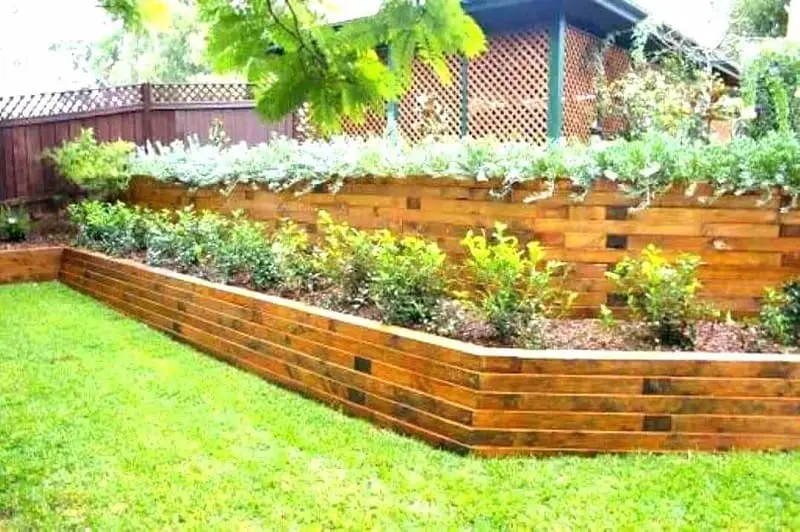

Your outdoor living area can be transformed with the correct and innovative use of landscape timber. M&M Timber landscaping products are manufactured from specially selected pine timbers providing the perfect solution for a diverse range of landscaping projects. Regularly check your landscape timbers for any fungal growth or infestation. During wet weather, the timber will swell and the cracks will seal.ĭepending on the climate you live in, many wood stains require periodic reapplication. In summer months, this can lead to cracking. Timber tends to expand when wet and shrink when dry. Now that your timber border is standing and secure, tidy up the soil at the edges. At every 3 feet horizontally, drive in the 12-inch metal stake through the slots you just made. Secure the pieces of timber by using a sledgehammer. Create the slot using a screw and the drill. This is where the metal stake will go in. You will have to make a slot in each piece of timber. The distance between the layers should be about 3 inches. If you plan to add more layers of timber to the border, make sure you place the second layer on top of the first without any overlapping. Tidy up the exposed ends of the timber using a saw and sandpaper. Environmentally friendly- safe for use around vegetable gardens and children's playsets. Starting from the edge of the driveway, place them all, checking for evenness regularly. Great for flower beds, gardens or other landscaping projects. The landscape timbers should be cut at regular intervals. If you’re able to handle the process yourself, you should be able to tackle this project without any help. Once you’ve completed the installation, be sure to wear protective eyewear and gloves. Place the landscape timbers in the trench side by side. Once this is done, you can place the top landscape timber on the rebar and start working. Periodically check for evenness by using the level. Stamp a heavy piece of timber to level the trench. If you are working with soil that heaves from frost, bury the timber in halfway. This way, 1 inch will stay exposed once you finish. Dig it 3 inches deep to hold a 4x4 wooden plank. Keeping the trench about 2 inches wider than the timber. The dimensions of this trench will depend on the size of the timber you are using. Consider using a stain and varnish to further beautify and protect the wood. This becomes all the more critical if the timber is going to come in contact with soil. Installing end caps on your wooden posts will also cut down on the possibility of erosion and rotting.

A cheaper alternative could be to opt for pressure-treated wood, which also resists decay. Most wood that is sold for outdoor use is pressure treated and coated with a preservative.Ĭedar, cypress, and redwood are typically rot-resistant when placed next to soil. Ensure that the wood you choose is treated for added strength and durability. When selecting landscape timbers, you can choose between softwoods-such as redwood and Western red cedar-or hardwoods like oak.


 0 kommentar(er)
0 kommentar(er)
